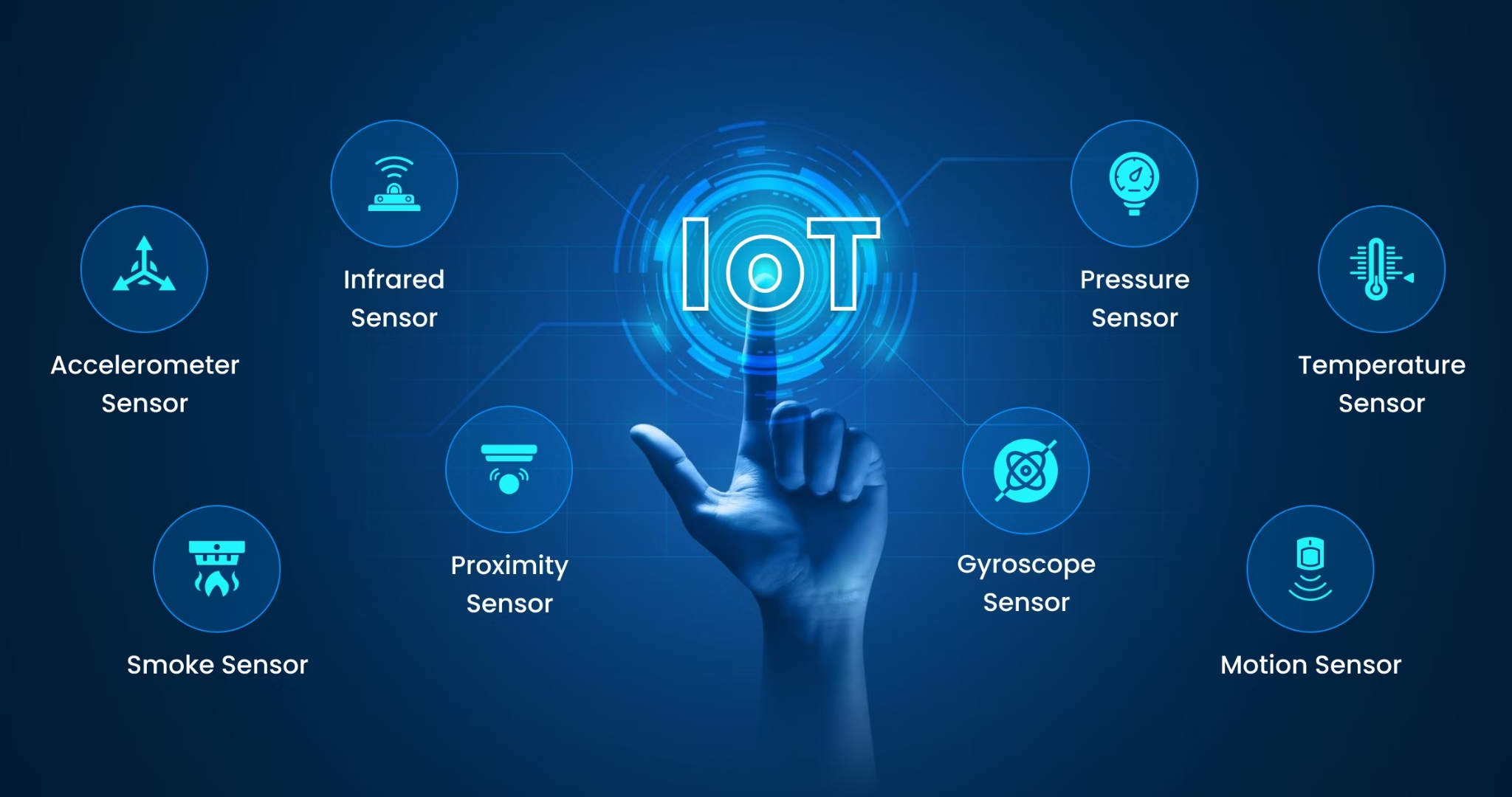
In recent years, the Internet of Things (IoT) has emerged as a transformative force across various industries. Its ability to connect devices and systems to the internet and enable data exchange has revolutionized multiple sectors, especially industrial manufacturing. The integration of IoT in manufacturing processes is reshaping how industries operate, leading to more efficient, flexible, and intelligent production lines. In this article, we will explore the profound impact of IoT on industrial manufacturing, examining how it enhances productivity, quality, and safety while introducing new opportunities for businesses worldwide.
1. What is IoT?
The Internet of Things (IoT) refers to the network of physical devices, vehicles, machinery, and other objects embedded with sensors, software, and connectivity that allow them to collect and exchange data over the internet. These connected devices communicate in real time, enabling them to automate tasks, monitor operations, and optimize processes.
In industrial manufacturing, IoT devices can range from simple sensors that track the condition of machinery to complex systems that enable entire production lines to function autonomously. By providing manufacturers with real-time insights into every aspect of their operations, enables smarter decision-making, predictive maintenance, and resource optimization.
2. Key Benefits of IoT in Industrial Manufacturing
2.1. Improved Efficiency and Productivity
One of the most significant benefits of IoT in industrial manufacturing is the ability to increase efficiency and productivity. By connecting machines, sensors, and devices to the internet, manufacturers can monitor their equipment’s performance in real time. This data allows them to identify bottlenecks, inefficiencies, and underperforming processes that may otherwise go unnoticed.
For instance, IoT sensors on manufacturing equipment can track machine utilization, operating speeds, and downtime, providing actionable insights for better resource allocation. Additionally, automated systems powered can help streamline repetitive tasks, reducing the need for manual labor and speeding up production times.
2.2. Predictive Maintenance
Maintenance is a critical aspect of industrial manufacturing, and IoT has revolutionized this practice by enabling predictive maintenance. Traditionally, maintenance in manufacturing was often reactive, with repairs occurring only after equipment broke down or malfunctioned. However, manufacturers can predict when equipment is likely to fail by continuously monitoring its performance and health.
By collecting and analyzing data from connected sensors, Internet of Things systems can detect early signs of wear and tear, such as changes in temperature, vibration, or pressure. This allows manufacturers to schedule maintenance before a failure occurs, reducing downtime and avoiding costly repairs. Predictive maintenance helps improve asset reliability and reduces maintenance costs, leading to more efficient operations.
2.3. Enhanced Quality Control
IoT has also made a significant impact on quality control in industrial manufacturing. With devices embedded in production lines, manufacturers can continuously monitor the quality of products in real time. Sensors can detect defects, measure dimensions, and ensure that products meet the required specifications.
For example, connected devices sensors can be used to track variables such as temperature, humidity, and pressure during production processes, ensuring that products are made within acceptable tolerances. This constant monitoring reduces the chances of defects going unnoticed and allows for quick adjustments to be made before products are shipped out.
2.4. Real-Time Data and Decision-Making
The integration of IoT in manufacturing provides managers and decision-makers with access to real-time data, enabling them to make informed decisions quickly. IoT systems collect vast amounts of data from various sources within the factory, including equipment performance, inventory levels, and worker productivity.
By analyzing this data, manufacturers can identify trends, optimize operations, and forecast future demand more accurately. Real-time data helps manufacturers make proactive decisions, whether it’s adjusting production schedules, reallocating resources, or addressing supply chain issues. This data-driven approach leads to better decision-making, faster response times, and more agile operations.
3. The Role of IoT in Smart Factories
One of the most exciting developments in industrial manufacturing is the rise of smart factories. A smart factory is an environment where IoT devices and systems are integrated into all aspects of production, from raw material procurement to product delivery. These factories are characterized by automation, real-time monitoring, and the ability to self-optimize based on data.
In a smart factory, IoT-enabled devices communicate with each other and with central control systems to manage every part of the production process. For example, robotic arms, conveyors, and other machines can operate autonomously, adjusting their behavior based on data collected from sensors embedded in the factory. Additionally, systems enable real-time data sharing across the supply chain, helping manufacturers coordinate better with suppliers, distributors, and customers.
The result is a fully connected and efficient manufacturing environment that can adapt to changes quickly, optimize workflows, and reduce waste. Smart factories are not just a concept for the future—they are already being implemented in industries like automotive, electronics, and consumer goods.
4. Improving Supply Chain Management with IoT
Another area where Internet of Things is transforming industrial manufacturing is in supply chain management. Traditionally, managing the flow of goods and materials through the supply chain has been a complex and time-consuming task. However, IoT technologies have made it possible to track inventory, shipments, and production schedules in real time.
IoT-enabled sensors and RFID tags can be used to track the location and condition of raw materials, work-in-progress, and finished goods as they move through the supply chain. This real-time visibility allows manufacturers to optimize their inventory levels, reduce stockouts, and ensure timely deliveries.
Moreover, enables better communication with suppliers and distributors, making it easier to coordinate production schedules and forecast demand. As a result, manufacturers can minimize disruptions, reduce costs, and improve customer satisfaction.
5. IoT and Sustainability in Manufacturing
As sustainability becomes an increasingly important focus for businesses and consumers alike, IoT is helping industrial manufacturers reduce their environmental impact. By providing detailed insights into energy usage, material waste, and emissions, IoT systems enable manufacturers to monitor and optimize their resource consumption.
For instance, IoT sensors can track energy usage throughout a factory and identify areas where energy is being wasted. By adjusting machine settings or optimizing workflows, manufacturers can reduce energy consumption and lower their carbon footprint. Similarly, IoT systems can help monitor material usage and minimize waste by providing real-time data on how much raw material is used in each production cycle.
By leveraging smart technology to improve efficiency and reduce waste, manufacturers can achieve greater sustainability and meet regulatory requirements, all while maintaining profitability.
6. Challenges and Considerations
While the benefits of IoT in industrial manufacturing are clear, there are also challenges to consider. The implementation of IoT technologies requires significant investment in infrastructure, including sensors, connectivity, and data management systems. Additionally, manufacturers must ensure that their connected systems systems are secure and protected from cyber threats, as connected devices can become vulnerable to attacks if not properly secured.
Data privacy and security are also significant concerns when collecting and transmitting large amounts of sensitive information across networks. Manufacturers must take steps to protect their connected systems networks from data breaches, malware, and other security threats.
7. Conclusion IoT
The integration of Smart technology into industrial manufacturing is revolutionizing how businesses operate, enhancing productivity, improving quality control, and optimizing supply chain management. By providing real-time data and enabling automation, IoT is helping manufacturers reduce costs, increase efficiency, and stay competitive in a rapidly changing global market.
As Smart technology technologies continue to evolve, we can expect even more innovations in the manufacturing sector. The development of smart factories, more advanced predictive maintenance, and increased sustainability efforts are just a few of the ways IoT is transforming the future of industrial manufacturing.
By embracing IoT and its capabilities, manufacturers can unlock new opportunities, improve their operations, and navigate the challenges of a digital future with greater ease and confidence.

IoT is transforming industrial manufacturing. According to a McKinsey report, the Internet of Things could add trillions of dollars to the global economy over the next decade.
